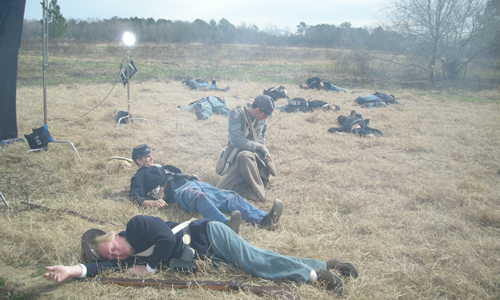Our first review
Richard Williams, a renowned author, film producer, and historian has posted the first review of our film. We thank Richard for his very kind words about our production. READ HERE. (PS. I will have some special photos and insights from a recent trip to the Kirkland monument as well as an interesting commentary on an error. Stay tuned.)
An expert's analysis
ABOVE: Mac Wyckoff leading a tour at the sunken road. (NPS website)
“I just watched your Kirkland movie and was super impressed. Very well written and accurate script, use of historians, the graphics were excellent. Overall a very professional looking production. Great job!” - Mac Wyckoff
Mac Wyckoff is a retired historian from the Fredericksburg/Spotsylvania National Military Park Service and THE leading professional authority on Richard Kirkland. Mac was responsible for researching and assembling the majority of source materials that were used in writing this film. We are honored to have Mac’s support and I am truly sorry that he retired and moved to the West Coast before we had a chance to film him for this documentary. His intellectual contributions to this project have been crucial and he continues to provide us with resources. I continue to quote him.
Mac is in the process of writing a book on the 2nd South Carolina (due to be released this winter) and generously sent us the copy from his Appendix B titled “The Angel of Marye’s Heights Controversy.” Our NPS friends over at Mysteries & Conundrums are posting an enhanced version of this study as a series: PART 1 – PART 2 – PART 3.
'The Angel' in Civil War News
Below is a transcript of the first ‘post-premiere article’ on The Angel of Marye’s Heights. (READ PDF) We thank Civil War News and Scott Boyd for their attention. We are also looking forward to the first formal review of the movie to come later this week courtesy of Richard Williams. For more details on upcoming screenings, the DVD status, and the latest news, visit www.theangelmovie.com. Richard Kirkland Documentary Premieres In Fredericksburg
by Scott C. Boyd (Civil War News, Vol. XXXVI, No. 8, September 2010)
FREDERICKSBURG, Va. – The movie “The Angel of Marye’s Heights” premiered on July 24 in the city where its hero, Richard Kirkland, earned that nickname during the Battle of Fredericksburg on Dec. 13, 1862.
The 30-minute documentary, full of dramatic scenes from the Kirkland’s life, played to a standing-room-only crowd of 200+ at the theater in the Central Rappahannock Regional Library’s downtown branch.
“When was the last time Fredericksburg had a world premiere of a film?” master-of-ceremonies Terry Thomann asked the crowd before the film began. “This is fantastic!”
Thomann is director of the National Civil War Life Museum and Foundation in Fredericksburg and a sponsor of the film.
Following the standing ovation at the end, the movie’s two principals, director Clint Ross and co-producer Michael Aubrecht, spoke about the project behind the film.
Ross traced the genesis of the film idea back to a magazine article he read eight years earlier about Kirkland, a sergeant in Co. G of the 2nd South Carolina Infantry Regiment.
After the horrific slaughter by the Confederates of Union troops assaulting the stone wall along Sunken Road at the foot of Marye’s Heights ended, Kirkland took pity on the enemy wounded he heard crying out in pain as they lay cut down in front of the wall. He risked his life to carry water to comfort the wounded men.
The film served as Ross’ thesis for his master’s degree in film and television from the Savannah College of Art and Design. For the short story film students were required to create, Ross said that he harkened back to the story of Richard Kirkland.
He originally proposed the film as a narrative, but his faculty advisors suggested that he do it as a documentary, and he took their advice. It took Ross and a group of collaborators 18 months to create. In addition to his directorial duties, he portrayed Kirkland as an adult.
His first collaborator was historian and writer Michael Aubrecht. When he Googled Richard Kirkland, Aubrecht’s name came up first. Ross said he was “blown away by Michael’s skill as a wordsmith.”
In thanking everyone and dedicating the film back to them, Ross said, “It is my prayer that this film honor my Lord and Savior, Jesus Christ, and the message that it carries.”
“Kirkland wasn’t born a hero. He was a simple Southern boy from Camden, S.C., who fought in a war and fought in a horrific battle and came to a point where he made a decision that somebody else’s life was more important than his own,” Ross said.
“This film is really a tribute to the common citizen willing to take a risk for something that is greater than themselves,” Ross concluded.
Aubrecht told a tale about how the movie’s “bible” or “playbook” containing all the most minute details about the film was accidentally left behind at a shooting location after the film crew headed to the next site.
A man who remained anonymous found the binder, called the cell phone number he found inside and before long it was back with the production crew.
“That guy’s pretty much responsible for this entire film being completed,” Aubrecht said. “We’re going to have to add ‘The Binder Guy’ in quotes at the bottom of the credits because his contribution was second to none.”
The audience included many of the people associated with the film who had on-screen roles, like Fredericksburg National Park Service historian Don Pfanz, storyteller Megan Hicks, historian John Cummings and Richard Warren II, who portrayed Kirk-land as a young boy.
Richard’s parents attended with their son. “It’s very exciting and makes us very proud and thankful that he wanted to be a part of that,” his father, Rick Warren, said.
Kathleen Warren said young Richard’s involvement began with a homeschool project where he made a video of himself portraying Kirkland.
“Since I got the information on Kirkland from Mike Aubrecht, I sent him a copy of the video and he loved it,” Kathleen said. Aubrecht suggested she post the video on YouTube, which led to Ross seeing it and wanting to include young Richard in the film.
“It was a big thrill,” according to Richard who said he would like to do more acting.
“I was really amazed,” Cummings said. “The Lord has blessed us. We had a full room. It’s a fantastic product — a great story to tell as well.”
Although he has been in documentaries before, this film was “the first one I’ve been in as a ‘talking head’ to that length,” Cummings said.
“Our motto for our museum is, ‘We drank from the same canteen,’” Thomann said. “What better way of illustrating that motto than the story of Richard Kirkland.”
The movie is shown daily at the National Civil War Life Museum at 829 Caroline St. in downtown Fredericksburg. Hours are 10-5 Monday-Saturday and 12-5 Sunday. The admission of $5 for adults and $2.50 for children includes the movie. For information, (540) 834-1859, www.civilwarlife.org, www.theangelmovie.com.
Cross-posted from movie site
When examining our film at face-value one might assume that we focused entirely on the Confederate perspective. This is understandable as the story revolves around a member of the 2nd South Carolina Volunteer Infantry. However, that would be an incorrect assumption as there is a distinct balance in our script. At a personal level, as I re-examine this story through the eyes of our audiences, I am beginning to see an entirely new perception emerge. To be frank, it is one that I have never really spent that much time focusing on, the point of view of the fallen Federals or the ‘victims’ so to speak. What brought about this realization? One of our 2011 bookings will be at the Carnegie Library Music Hall in Pittsburgh, PA. In addition to having an outstanding theater and Civil War museum on site, the Carnegie is also based in my hometown. On April 30th, they are hosting a Civil War program featuring exhibits, speakers, a re-enactment and The Angel of Marye’s Heights. In preparation for the talk that I intend to give following the film, I went looking for a local tie-in with our story. This brought me to the 123rd PA Regiment Volunteers who were mustered out of Allegheny County. Below is an excerpt from an account of their experience at the Battle of Fredericksburg:
“On the following day the battle opened, and at three P. M., after the corps of Hancock and French had been checked and terribly slaughtered, Humphreys' Division was ordered in. It was a forlorn hope, but gallantly it went forward, and charged again and again those impregnable heights. What brave men dare do, they did; but it was all in vain. No human power could stand against the storm that swept that fatal ground. The One Hundred and Twenty-third occupied a position in the line, with its right reaching nearly to the pike, and bore manfully its part in the battle, suffering grievously. Lieutenant James R. Coulter was among the killed, and Captain Daniel Boisol and Lieutenant George Dilworth among the mortally wounded. The entire loss was twenty-one killed, and one hundred and thirty-one wounded. All night long it lay in position and through the weary hours of the following day, exposed to a constant fire of the enemy's pickets, and until nine at night, when it was ordered to retire”.
Source: Dyer, Frederick H. A Compendium of the War of the Rebellion Compiled and Arranged from Official Records of the Federal and Confederate Armies, Reports of he Adjutant Generals of the Several States, the Army Registers, and Other Reliable Documents and Sources. Des Moines, Iowa: The Dyer Publishing Company, 1908 (via pa-roots.com).
So instead of giving my normal talk focusing specifically on Kirkland’s “side,” I intend to speak more to the courage and tenacity of the 123rd PA Vols. and the high-command’s ignorance that doomed them. By paying homage to Kirkland’s act of compassion with this film, we are also recognizing the sacrifice of the men that he tended to. Remember that there are two soldiers on the Felix DeWeldon monument. One is in blue.
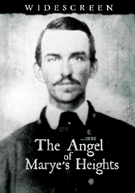
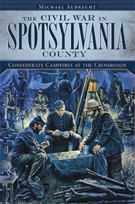
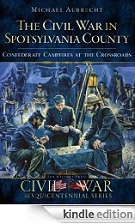

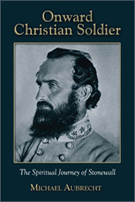

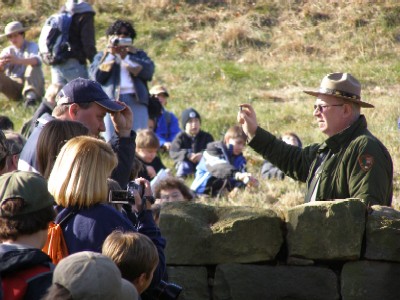
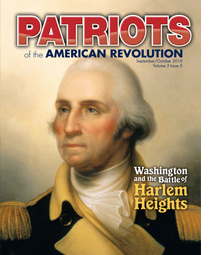 My latest piece for
My latest piece for 